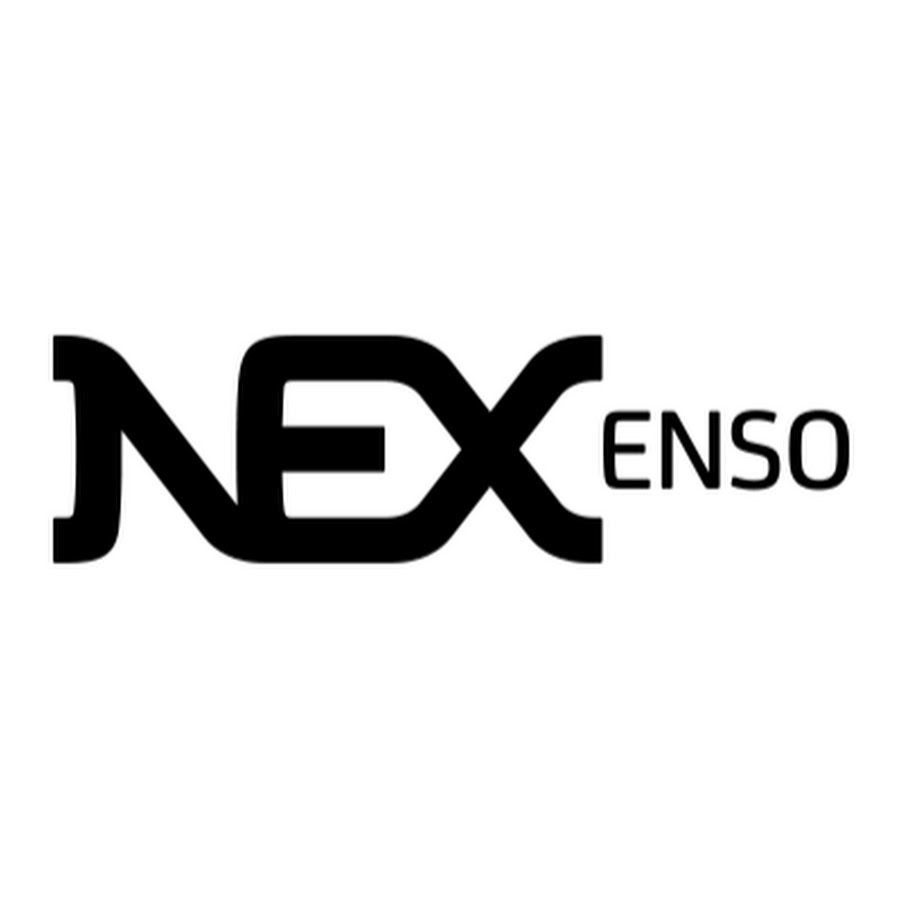Published
- 07:00 am

Today, BeCyberSure, a leading provider of data management and information security solutions, has revealed implementation of General Data Protection Regulation (GDPR) risk assessment framework.
Along the expansion of digital marketplace, arises the need for proper data management and its security. GDPR substitutes UK Data protection Act 1998 and applies it to every company that collects, processes or stores EU citizens’ data, irrespective of sector, size and geographical location.
BeCyberSure ensures that all business entities regardless of their size, comply with GDPR via providing accurate audits and comprehensive tests of the organizations’ activities. Particularly, GDPR sets for companies an essential benchmark that navigates them while executing internal changes in their policies. It includes modifications in human resources, technological upgrades, and other procedural aspects that require compliance with regulations.
Carolyn Harrison, Marketing Director at BeCyberSure adds that GDPR is a company wide-issue and should not be applied solely to IT. Every assessment starts with people, policies, and processes to unveil any possible variations that may result in non-compliance.
Harrison also notes: “We then deep-dive, looking at what data the organisation is capturing, how it is processed, what consent has been given, where it is stored and how to dispose of unrequired information”. “The best technology in the world can be rendered useless, if an open door, whether physical or digital, creates the opportunity to access to data.”
No doubts, launch of GDPR assessment is one more proof of the company’s commitment to develop long-term relationships with customers based on transparency and trust.
Related News

Ian Kerr
CEO at Bolero International
A strong focus on digitisation in trade finance made the International Chamber of Commerce (ICC) Banking Commission’s 2017 annual meeting in Jakarta an environment where Bolero chairman Daniel Cott see more
- 01:00 am

ITG, a leading independent broker and financial technology provider, today announced plans to offer conditional orders for POSIT Alert® in Europe.
The conditional order functionality can enhance the significant buy-side block liquidity currently available in POSIT Alert, which averaged $18 billion in indicated daily liquidity in the EMEA region during the first quarter of 2017. Conditional orders are already available as an opt-in feature to POSIT Alert in the U.S. and the functionality will be rolled out for POSIT Alert in EMEA during the second quarter of 2017.
“With the MiFID II trading rules nearing on the horizon, there is a greater focus on block trading,” said Duncan Higgins, Head of Electronic Products for ITG in Europe. “Investors are looking to interact with non-displayed liquidity in a more deliberate way and the conditional orders functionality enables users to access new block liquidity sources while still minimizing their market impact.”
New POSIT Alert Records
The new conditional order functionality adds to the strength of POSIT Alert’s global crossing capabilities. POSIT Alert set new trading records in the first quarter of 2017, with more than $440 million in average daily value traded in EMEA and more than $42 million in Asia Pacific. POSIT Alert is available to buyside traders to execute in 37 markets worldwide, seamlessly connecting the trade blotters of more than 2000 traders. POSIT Alert averages more than $60 billion in indicated liquidity per day globally, with an average trade value of more than $1.4 million.
Related News
- 09:00 am

ENSO, a NEX Group business and leading portfolio finance and centralized treasury management solution for the buy-side, announces today that it plans to expand the ENSO Broker Vote tool (“Broker Vote”) to include MiFID II research consumption, powered by RSRCHXchange, the MiFID II compliant marketplace for institutional research.
The expanded Broker Vote tool will provide clients with a clear methodology for research payments, fully validating how payments for research were reached based on the quantity and quality of services provided. In addition, ENSO clients will be able to value each research provider based on their total consumption, wallet commissions and overall quality ratings.
Broker Vote maintains its industry-wide known broker vote functionality while clearly linking services to payments for research and avoiding any conflicts of interest with execution under MiFID II.
Matthew Bernard, Chief Executive Officer of ENSO, said: “MiFID II is a key focus not only for our clients, but for the broader marketplace in 2017. By expanding our Broker Vote tool we are able to deliver an enhanced solution to address the pivotal research requirements for both our sell-side and buy-side clients alike. At NEX, we have a strong history of partnering with businesses that are addressing tomorrow's issues. We are excited to collaborate with RSRCHXchange to solve this problem for our clients and the market.”
Vicky Sanders, Co-Chief Executive Officer of RSRCHXchange, said: “We are excited to be working with ENSO and enhancing their Broker Vote tool. They are award-winning innovators and they are providing the industry with an evidenced Broker Vote tool, which is not only MiFID II compliant, but also best in breed."
RSRCHXchange is the latest company to join the Euclid Opportunities portfolio, NEX Group’s financial technology investment business. RSRCHXchange launched RSRCHX, its marketplace and MiFID II workflow solution for institutional research in 2015, in anticipation of the unbundling rules which come into force in January 2018.
Pairing ENSO’s community of more than $1 trillion in client assets under advisory (AUA) and 14 major broker-dealers with RSRCHXchange’s more than 1,000 asset management firms and over 200 bank, broker and boutique research providers, establishes a powerful buy-side and sell-side client base who are actively preparing for preparing for MiFID II regulations.
Related News
- 01:00 am

3W Infra, a fast-growing global Infrastructure-as-a-Service (IaaS) hosting provider headquartered in Amsterdam, announces the expansion of its managed services offering with the launch of 3W Infra IT Infrastructure Relocation - a newly delivered data center neutral relocation service for IT infrastructures housed in data centers located in the Amsterdam region, Frankfurt and London.
The new managed service, 3W Infra IT Infrastructure Relocation, delivered by 3W Infra’s certified mobile engineering teams, is aimed at different types of users including enterprises, Cloud Services Providers (CSPs), Systems Integrators (SIs), Managed Services Providers (MSPs) and colocation companies. Uniquely, the 3W Infra IT Infrastructure Relocation service is being delivered beyond the scope of the company’s own Amsterdam-based flagship data center and its existing global IaaS customer base.
“We like to see ourselves as pretty broad-minded,” said Roy Premchand, Managing Director of 3W Infra. “We don’t consider it cheating when users decide to deploy their infrastructures outside the 3W Infra network in another colocation data center. We’re even willing to relocate IT infrastructures from our flagship Amsterdam premises to competing facilities. Also relocation of IT Infrastructure from a data center on the Internet hub in Frankfurt to a London facility would be an option, or vice versa. Our open-minded approach towards the delivery of engineering services is part of our intention to build long-lasting relationships within the hosting business.”
The 3W Infra IT Infrastructure Relocation service includes the following activities for data center relocation strategy, planning and execution:
- Roadmap for relocation – Based on hardware inventory, 3W Infra engineers and a project manager will determine the scope of the project. Which servers and network equipment need to be relocated? This equipment may include rack servers, routers, switches, load balancing devices, firewalls, power distribution units (PDUs), backup devices, et cetera.
- Project Management – 3W Infra’s project managers provide end-to-end project management services, which involves the migration management of associated equipment and planning for the overall ‘big picture.’ Experienced project managers are able to administer dependencies between different migration tasks while identifying risks and taking action to avoid them.
- Preparing, planning and documentation – The 3W Infra IT Infrastructure Relocation service includes taking care of detailed lists describing everything in the existing data center environment. It also includes all details of the desired successful migration results associated with the project. Derived from the roadmap design, an implementation plan will describe all steps, dates/moments, resources, and all parties/people involved.
- Logistics – Building on previously drafted documents, experienced logistics specialists make sure that all hardware equipment is being transported according to plan. This role includes selecting the appropriate means of transportation while eliminating risks.
- Providing a New Setup – 3W Infra’s certified engineers are able to provide hardware design tasks and site preparation tasks onsite. If needed, they can even provide a whole new setup for a customer’s IT infrastructure in the new data center environment.
- Step-by-Step Migration – According to 3W Infra, an effective strategy to minimize downtime is to create an active-active setup at both data center locations - the previous and new environment. 3W Infra’s recent ‘active-active’ migration of its full IaaS infrastructure with 4,000 dedicated servers would be the proof that it’s the recommended strategy for a low-risk data center relocation approach.
- Relocation Evaluation – With business continuity of the relocated IT Infrastructures in mind, 3W Infra’s relocation project management teams provide comprehensive evaluation – ensuring that the new data center environment provisioned is meeting current and long-term requirements.
For 3W Infra’s engineering teams it doesn’t matter if customers are in need of a bulky server migration or relocation of just a small amount of servers. “Our Project Management department is professionally capable of doing any relocation project,” said Mr. Premchand. “Evidence will follow soon, as they have commenced relocating our own IaaS environment with 4,000 dedicated servers under management to a new, highly redundant and energy-efficient data center in Amsterdam, in Switch Ams1.”
3W Infra’s IT Infrastructure Relocation service would help organizations with:
- Getting Fast Results – It helps organizations meet rigid deadlines for relocating their IT infrastructure.
- Saving Time and Costs – When done by experts, data center relocation would save time and therefore costs.
- Filling in Expertise Gap – Relocation of IT Infrastructure is being done only once in a while, so most organizations don’t have the expertise on-board.
- Improving Availability – When done right, a new setup might help organizations get rid of their legacy configurations while improving the availability of their environments.
Related News
- 05:00 am

Ullink, a global provider of electronic trading and connectivity solutions to the financial community, has launched a fully automated post-trade data management solution called UL PUBLISHER, enabling market participants to report transaction data to relevant regulatory authorities, meet upcoming MiFID 2 regulation and create a centralised view of post-trade data across multiple asset classes and front-office electronic trading systems.
With the introduction of MiFID 2 in January 2018, firms face new challenges in collecting, validating, enriching, submitting and tracking order and trade data across asset classes and front-office trading systems. For transaction reporting, MiFID 2 introduces requirements for more than 60 new data items to be reported, imposes new reporting logic, and places responsibility on both buy-sides and sell-sides to report under different reporting scenarios. New reporting destinations – or Approved Reporting Mechanisms (ARMs) – are also being created introducing new connectivity and integration requirements.
To address this, Ullink’s UL PUBLISHER provides a centralised solution for post-trade data management which consolidates and standardises data across front-office trading systems, providing complete traceability of all actions performed on an order across different front-office order management, risk and execution systems. For transaction reporting, UL PUBLISHER connects firms to a wide range of ARMs for regulatory reporting of eligible, cross-asset class MiFID 2 instruments, and generates reports in specific formats required by the ARMs. The post-trade data captured and normalised by UL PUBLISHER can also feed a variety of downstream compliance workflows, including best execution, trade surveillance and order record keeping.
Richard Bentley, Chief Product Officer at Ullink comments: “Much of the impact of MiFID 2 on post-trade workflows concerns data – the need to collect, normalise and enrich an extended data set across a variety of front-office systems. UL PUBLISHER provides the means to centralise this process across asset classes in a fully-automated fashion, minimising impact on existing trading platforms and providing a single, consistent data set to feed downstream processes. Collation of order and trade information for transaction reporting via an ARM is only one of the potential application areas of this new solution.”
Related News
- 04:00 am

Tieto continues as a supplier of Outokumpu’s IT infrastructure services and has signed a five-year contract whereby Tieto will provide Outokumpu with next generation infrastructure services. With Tieto’s solution, Outokumpu enhances its competitiveness by improving operational efficiency through global standardisation and decreased time-to-market.
The continuation contract includes a transformation of the IT infrastructure to provide efficient support to Outokumpu’s various business functions. Outokumpu’s objective is to reduce costs, improve quality of service, mitigate risks and integrate services. Tieto provides multi-cloud capabilities based on the Tieto OneCloud solution which is a combination of public and private cloud capacity platforms with a unified service experience for Outokumpu.
“Tieto will help us to improve stability, optimize the cost base and enhance our competitiveness”, says Matti Suurnäkki, CIO at Outokumpu.
“We are delighted that Outokumpu has chosen us to provide their infrastructure services. I look forward to continuing our common mission to support Outokumpu’s strategic initiatives by modernizing the IT”, says Jaakko Tapanainen, Head of Industrial and Consumer Services Finland at Tieto.
With this delivery, Tieto will help Outokumpu in improving the overall quality level of service and enable the standardization of processes on a global level. In addition, Outokumpu will gain modern, scalable and cost-effective IT infrastructure that ensures business continuity and meets the future business needs.
Related News
- 07:00 am

SWIFT, in collaboration with leading global transaction banks, is developing a proof of concept (PoC) application that will test whether distributed ledger technology (DLT) can be used by banks to improve the reconciliation of their nostro accounts in real time, optimising their global liquidity.
Australia and New Zealand Banking Group, BNP Paribas, BNY Mellon, DBS Bank, RBC Royal Bank and Wells Fargo are among the banks participating in the PoC. These banks are working with SWIFT to identify the challenges, define the specifications, build the application and ultimately test the concept. An additional 20 banks will join the programme at a later stage to further validate and test the DLT concept. The Results of the PoC will be presented at Sibos in Toronto in October
The PoC supports SWIFT’s goal of making cross-border payments more efficient, a mission it has championed through the launch of the global payments innovation (gpi) service, which offers customers fast, transparent and traceable cross-border payments.
“The nostro DLT proof of concept is deeply embedded in the SWIFT gpi story of streamlining the cross-border payments system,” says Wim Raymaekers, Head of Banking Markets and SWIFT gpi at SWIFT. “It allows us to explore how this maturing technology can provide a collaborative solution to what our gpi member banks have identified as a significant pain point – nostro accounts reconciliation.”
In developing the PoC, SWIFT is leveraging the recently released Hyperledger[1] Fabric v1 technology, and combining it with key SWIFT assets, to ensure that all the information related to nostro/vostro accounts is kept private and seen only by the account owner and its correspondent banking partner. The PoC application will use a private permissioned blockchain in a closed user group environment, with specific user profiles and strong data controls, and user privileges and data access will be strictly governed. The data stored on the ledger and the APIs used to query and update it will also be designed to support ISO 20022 message formats.
Damien Vanderveken, Head of R&D, SWIFTLab and UX at SWIFT, says: “We are very excited to start the DLT proof of concept with these participating banks. This is a great step forward and another example of how SWIFT and the industry can work together to solve concrete business challenges with an innovative and collaborative mindset.”
Since the launch of gpi in February, twelve gpi banks are sending several hundreds of thousands cross-border payments across the globe, and over 30 additional banks started their implementation project for live operations. In total, nearly 100 banks have signed up to SWIFT gpi, representing over 75% of all cross-border payments on SWIFT.
Related News
- 02:00 am

Prysm, Inc., a leading digital workplace platform provider, today announced the appointment of Tom Blenkin who will lead the company’s European region as vice president of sales. Blenkin brings with him an industry-proven track record with more than 10 years of experience working in the European software market.
In his new role, Blenkin will be responsible for advancing the company’s go-to-market strategy, business development, and supporting Prysm’s customers in Europe as the business expands in this key region.
“From the start, I have been very impressed with the strength of the Prysm brand and its technology. It has a very strong footing within the digital workplace market in North America and the potential to continue this growth in the European market is an exciting prospect,” said Blenkin. “The collaborative workspace market is growing at a rapid rate, particularly in Europe as businesses get to grips with the productivity and engagement benefits that it provides, and I can’t wait to spearhead this expansion deeper into Europe.”
Blenkin joins Prysm from OpenText, where he was head of sales for Northern Europe and focused on growing the digital experience management business. Prior to this, Blenkin was a sales leader at HP Inc.
“Tom brings an impressive track-record of driving sales in the European market to the Prysm team. His knowledge and experience in the software industry will ensure that our customers are deriving the best possible value from our solution,” said Jason Smith, senior vice president, global sales, Prysm. “We’re thrilled to have Tom bring his expertise to Prysm as we look to strategically grow our brand across the EMEA region.”
Blenkin will be based in Prysm’s London office, overseeing Prysm’s European sales division.
Joining the Prysm European hub in London and its office in Ghent, Prysm recently opened a Customer Experience Center (CEC) in Frankfurt. The new CEC will host new and existing Prysm customers as the company expands across Europe. To learn more about Prysm, visit prysm.com or schedule a demo of Prysm’s digital-workplace platform.
Related News
- 07:00 am

Workday, Inc., a leader in enterprise cloud applications for finance and human resources, today announced that Eiffage, one of Europe's leading construction and concessions companies, has selected Workday Human Capital Management (HCM). With Workday, Eiffage will have one cloud-based HR system that will help streamline business processes, drive efficiencies, and enable more informed decision-making based on real-time data.
With 64,000 employees across 70 countries, Eiffage’s business activities are focused on construction, real estate development, civil engineering, energy, and concessions. The company sought to replace its network of disparate, local HR systems, and chose Workday for one system that would create common processes throughout the business, equip employees with self-service capabilities, and empower managers with easy-to-use global reporting and analytics.
Additionally, with Workday, Eiffage expects to:
- Streamline and support critical HR processes and operations, utilising a single source for all HR data across the entire global organisation.
- Improve workforce planning with real-time analytics and reporting that equips managers with robust, reliable data about their people and teams, and business leaders with clear insight into the entire workforce.
- Empower employees with access to relevant information and the ability to easily take action and perform HR tasks at any time, from a mobile device.









